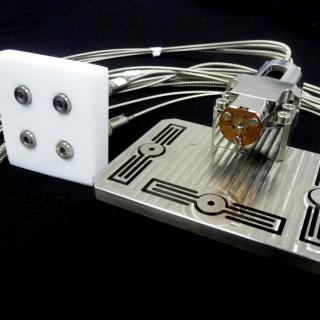Near Infra Red Planet Searcher


NIRPS is an infrared extension of HARPS covering instantaneously the Y, J and H band (973.79 to 1808.53 nm). A K-Band extension is possible. NIRPS is a fibre-fed Echelle spectrograph with a spectral resolution of at least 80’000. NIRPS shall routinely deliver radial velocities with a precision of <1 m/s. Beyond this it can also be used as a general purpose spectrograph to observe objects as diverse as Comets or bright AGNs. The total efficiency at for blaze conditions (including atmosphere, telescope and slit losses for a 1 arcsec seeing in V band) shall be at least of 10%. It will be operated in parallel together with HARPS whereby the NIRPS arm will employ an adaptive optics system to maximize throughput while keeping the instrument size moderate. NIRPS will be deployed in two steps:
1. retiring the old HARPS adaptor and replace it with the new one, including AO and new calibration unit
2. erecting and commissioning of the NIRPS spectrograph in the 3.6m Coude-lab and commission it thereafter
The HARPS polarimetry will be maintained. NIRPS will come with a pipeline and all tools to provide science operations and data flow at the ESO/HARPS standard level. The NIRPS consortium will be reimbursed for building the instrument and operating it with ~50% of the available time. The rest, however, it is available to the ESO community for standard open time proposals.
Calibration Unit:
The calibration system is a separate unit that contains all light sources necessary, controllers and injection optics. The unit is located at the Coude floor and calibration light is transmitted via optical fibers to the NIRPS Front End.
The will be two types of fibres (see below) for the two operations modes of NIRPS: This unit has its own control module for the various lamps and lasers, power supplies and motors. The whole calibration unit will be fitted into a standard rack and it comprises the following elements:
2 fibre-coupled laser diodes at λ1 = 642 nm and λ2 = 1064 nm
1 single mode fiber coupled laser diode λ3 = 642 nm
2 Uranium-Neon lamps with two fiber outputs each
1 Tungsten lamp with two fiber outputs each
External inputs to the unit so that a Laser Frequency Comb or a Fabry-Perot calibration source can be hooked up

